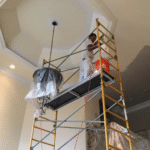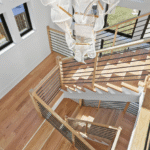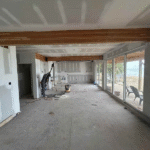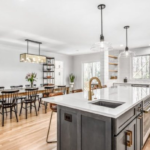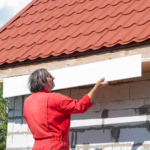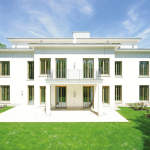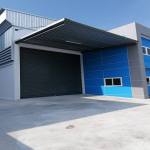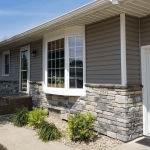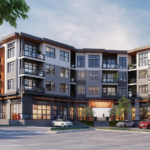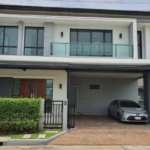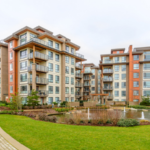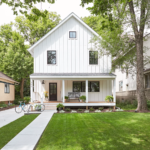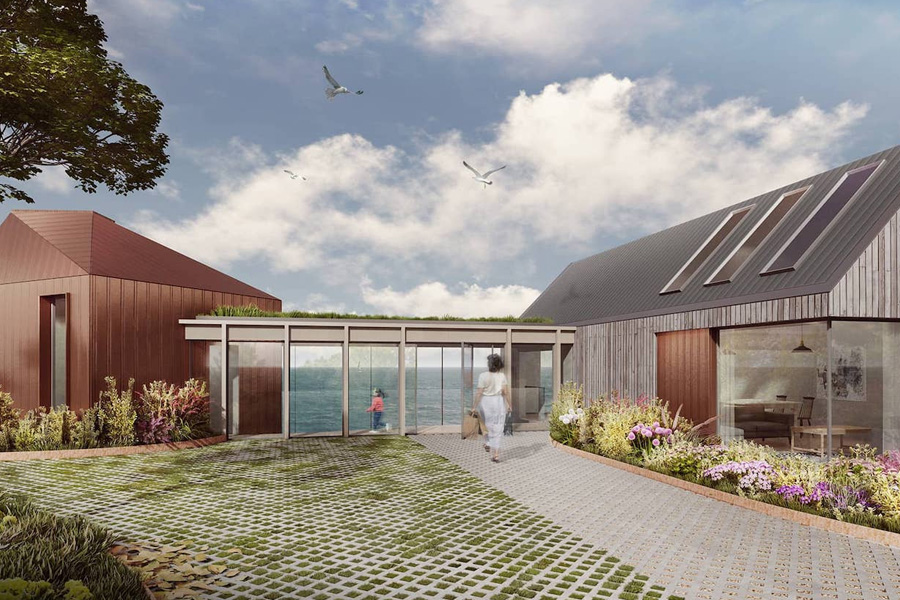
For businesses across the United Kingdom looking to expand or enhance their properties, professional architectural support offers a complete solution. These specialists handle everything from domestic homes to commercial buildings, creating detailed plans for extensions, conversions, and new construction projects.
Navigating complex planning processes and building regulations requires expert knowledge. Skilled teams ensure all projects meet legal requirements while delivering designs that balance aesthetic appeal with practical functionality. This professional guidance helps businesses avoid costly delays and compliance issues.
Tailored solutions align with specific business objectives, budget constraints, and timeline needs. The right approach considers both current requirements and future growth potential, creating spaces that support operational efficiency and brand identity.
Engaging qualified professionals brings technical expertise, creative vision, and project management capabilities to any development. This comprehensive service covers the entire journey from initial concept through to construction completion and final approvals.
Key Takeaways
- Professional architectural support provides end-to-end solutions for property development projects
- Expert guidance ensures compliance with UK planning regulations and building standards
- Tailored designs align with specific business objectives and operational requirements
- Comprehensive services manage projects from initial concepts through to completion
- Skilled professionals balance aesthetic considerations with practical functionality
- Proper planning helps businesses avoid costly delays and compliance issues
- Future-focused designs support both immediate needs and long-term growth strategies
Introduction to Architectural Excellence
Before any design work begins, qualified architects focus on comprehensively understanding client aspirations and site potential. This initial phase establishes the framework for successful project outcomes.
Understanding Your Project Goals
Architects conduct detailed surveys to assess work feasibility and existing structures. They discuss client vision while evaluating budget parameters and realistic timelines.
Feasibility studies determine whether proposed developments are viable from multiple perspectives. This includes structural considerations, regulatory compliance, and financial practicality.
The balancing of aesthetic ambitions with practical requirements forms a crucial aspect of the process. Architects navigate building regulations and site-specific challenges that impact design decisions.
Experienced professionals adopt a collaborative approach when working with clients. Clear communication channels ensure shared understanding of objectives throughout the planning phase.
Qualified architects bring specialised knowledge of materials, construction methods and innovative solutions. This expertise maximises space utilisation while addressing sustainability principles.
Thorough assessment at the project outset prevents costly revisions later. It ensures the final design aligns perfectly with client expectations and meets all regulatory requirements.
Expert Architecture Services
Precise technical documentation forms the backbone of a successful construction project, guiding every stage from ground-breaking to completion. This phase translates initial concepts into the detailed instructions that contractors need.
Quality Construction Drawings
Architects produce comprehensive sets of drawings. These include floor plans, elevations, and detailed sections.
Every material specification is clearly documented. This covers permanent fixtures like doors, windows, and electrical fittings. These detailed plans serve as crucial legal documents. They define the exact scope of work for everyone involved.
This clarity protects both the client and the building team. It minimises misunderstandings and potential disputes during the project.
Streamlined Planning & Project Coordination
The architectural team manages the entire planning application process. They prepare submissions and liaise directly with local authorities.
Their expertise ensures applications navigate complex regulatory frameworks efficiently. This helps to avoid unnecessary delays.
Architects also act as the central point of communication. They coordinate between the client, contractors, and engineers.
This coordination is vital for seamless project progression. It ensures all parties work from the same accurate plans and designs.
Bespoke Design and Planning Solutions
Creating spaces that truly serve their purpose requires a bespoke methodology tailored to each unique situation. This approach ensures every project reflects specific client aspirations while maximising site potential.
Tailored Design Concepts
Architects develop custom solutions through careful analysis of client lifestyle and operational needs. They consider how people will use each room in a house or commercial space.
The creative process incorporates client preferences while introducing innovative ideas. This collaboration results in distinctive plans that balance aesthetics with practical functionality.
Skilled professionals integrate interior design principles to optimise space utilisation. They consider natural light, material selection, and spatial flow to create harmonious environments.
Value engineering ensures designs respect budget constraints without compromising quality. Architects suggest cost-effective alternatives that maintain the project’s vision.
Efficient Planning Application Processes
Experienced teams streamline the planning application process through strategic preparation. They conduct pre-application consultations to identify potential issues early.
Comprehensive submissions include detailed design statements and supporting documentation. This thorough approach strengthens the case for approval.
Understanding local planning policies is crucial for successful applications. Professionals navigate these requirements to secure permissions efficiently.
Integrating Technical Design & Building Regulations
Following successful planning permission approval, architects transition from conceptual designs to detailed technical specifications. This phase transforms visionary plans into practical construction documentation that contractors can execute precisely.
Technical Drawings and 3D Walkthrough
Architects produce comprehensive technical drawings with exact dimensions and material specifications. These detailed plans cover structural elements, drainage systems, and electrical layouts.
Advanced 3D walkthrough technology allows clients to explore their future spaces virtually. This immersive experience helps identify preferences before construction work begins. Clients can request modifications while changes remain cost-effective.
Approval and Compliance Procedures
Building regulations approval represents a separate but essential process from planning permission. It addresses structural integrity, fire safety, and energy efficiency standards.
Qualified architects ensure compliance with current technical requirements including Part L (energy conservation) and Part M (accessibility). They coordinate submissions and respond to building control queries efficiently.
The architect facilitates contractor tendering by evaluating multiple competitive bids. This process balances quality standards with realistic construction timelines and budget considerations.
Innovative Home and Office Extensions
From transforming a cramped kitchen into a spacious family hub to adding a dedicated home office, extensions address modern living needs directly. They represent a strategic property development, enhancing both functionality and market value. A well-executed extension creates seamless new space that feels like a natural part of the original building.
Customised Space Solutions
Homeowners can choose from various extension types. Rear extensions popular for expanding living and kitchen areas. Side return extensions maximise space in narrow urban plots. Wraparound designs offer comprehensive solutions for larger properties.
Each design is tailored to the specific property, whether a terraced house, semi-detached, or detached home. The goal is to create space that supports your lifestyle or business operations. This bespoke approach ensures the final design perfectly meets your functional requirements.
The trend for office extensions continues to grow. Businesses adapting to hybrid working patterns often need dedicated professional spaces. An extension can provide a quiet, productive environment without the cost of relocating.
Sepia
Firms like Sepia Design specialise in this type of creative project. They focus on innovative designs that blend with existing structures. Maximising natural light and ensuring structural integrity are key priorities.
Sepia Design approaches each project with a focus on client vision and planning constraints. Their service delivers bespoke solutions that exceed expectations for both residential and commercial clients.
Collaborative Project Management
The complexity of contemporary construction requires integrated project management approaches that unite various specialists. This coordination ensures all stakeholders work towards common objectives throughout development projects.
Team Expertise and Coordinated Workflow
Architectural teams bring together diverse professionals including technicians, engineers, and construction specialists. Their collective expertise enables efficient problem-solving when challenges arise during complex projects.
Modern practices implement digital coordination systems that streamline communication between clients and contractors. Regular progress meetings maintain alignment across all project phases.
| Project Phase | Key Activities | Team Members Involved | Target Completion Date |
|---|---|---|---|
| Design Development | Technical drawings, material selection | Architects, technicians | Week 4-6 |
| Contractor Selection | Tender evaluation, contract negotiation | Project manager, client | Week 8 |
| Construction Phase | Site inspections, quality checks | Architects, contractors | Week 9-20 |
| Final Completion | Regulatory approvals, handover | Full team coordination | Week 22 |
Collaboration with Sepia Design
Working with Sepia Design connects clients with professionals experienced in managing construction work from conception to completion. Their approach focuses on realistic scheduling that accounts for planning approvals and construction timeframes.
Proactive management minimises delays and maintains quality standards through careful risk identification. This ensures projects remain on track despite inevitable challenges during building work.
Sustainable Construction and Regulatory Compliance
Sustainable construction principles are now fundamental to modern building projects, integrating environmental responsibility with regulatory compliance. Qualified professionals focus on energy efficiency, sustainable materials, and minimising environmental impact throughout a building’s lifecycle.
This approach aligns perfectly with the UK’s stringent building regulations framework. These standards ensure structural safety, fire protection, and accessibility for all users.
Navigating Essential Approvals
A crucial distinction exists between planning permission and building regulations approval. Planning permission concerns the suitability of a development’s design and use of land.
Building regulations focus on the technical aspects of how a structure is built. An experienced architect manages both application processes efficiently. They maintain current knowledge of regulatory updates.
This expertise helps avoid common issues like non-compliant alterations or insufficient fire safety measures. Securing all necessary permissions before work starts prevents costly delays.
Professional Oversight During Construction
During the construction phase, the architect’s role expands to include contract administration. They conduct regular site inspections to verify the contractor’s work matches the approved designs.
This oversight ensures compliance with all specifications and regulatory requirements. Architects registered with ARB and members of RIBA adhere to strict professional codes.
Their professional indemnity insurance offers clients vital protection. This comprehensive service guarantees projects meet the highest standards of safety and sustainability.
Conclusion
Successful property development hinges on selecting the right architectural partner from the outset. Businesses should verify that their chosen professional holds ARB registration and appropriate qualifications. This due diligence ensures projects benefit from comprehensive expertise throughout every phase.
Thorough contracts clearly outline scope, timelines, and payment terms, protecting client interests while establishing realistic expectations. Qualified architects manage complex processes including planning applications and building regulations compliance. Their oversight prevents costly issues during construction work.
Reviewing portfolios of completed office extensions and house developments demonstrates practical capability. Asking about project approach, budget management, and contractor relationships informs better decision-making. This collaborative way of working delivers spaces that meet both immediate needs and future growth.
Strategic investment in professional architectural guidance ultimately saves time and cost while ensuring regulatory compliance. The right partnership transforms business visions into exceptional built environments that serve organisations well into the future.
FAQ
What is typically included in your comprehensive architecture services?
The service encompasses the entire project journey. This includes initial design concepts, detailed construction drawings, handling the planning application, ensuring building regulations compliance, and contract administration during the build phase.
How long does the planning permission process usually take?
The time frame can vary depending on the local authority and the project’s complexity. Typically, a decision on a planning application takes eight to twelve weeks from the submission date, provided there are no significant issues.
Can you help manage the project budget and overall cost?
A> Absolutely. A key part of the work involves detailed cost planning from the outset. They provide transparent advice to help keep the development within the client’s budget and can manage tender processes to secure competitive quotes from contractors.
What is the role of contract administration during construction?
During the construction phase, the architect acts as the client’s agent. They visit the site, monitor progress against the drawings, certify payments to the contractor, and help resolve any on-site issues that may arise, ensuring the work aligns with the designs.
Do your services include interior design for extensions or new builds?
Yes, many practices offer integrated interior design services. This ensures a seamless flow from the external architecture to the internal space, creating a cohesive and functional environment for a home or office.
How do you ensure a project complies with UK building regulations?
A> Expertise in current regulations is fundamental. They produce thorough technical drawings and specifications that are submitted for approval, liaising with building control bodies to secure the necessary certifications before work begins on site.
What are the benefits of using 3D walkthroughs in the design process?
3D visualisations and walkthroughs allow clients to fully understand the proposed designs before construction starts. This helps in making informed decisions about space, materials, and layout, reducing the potential for costly changes later.




